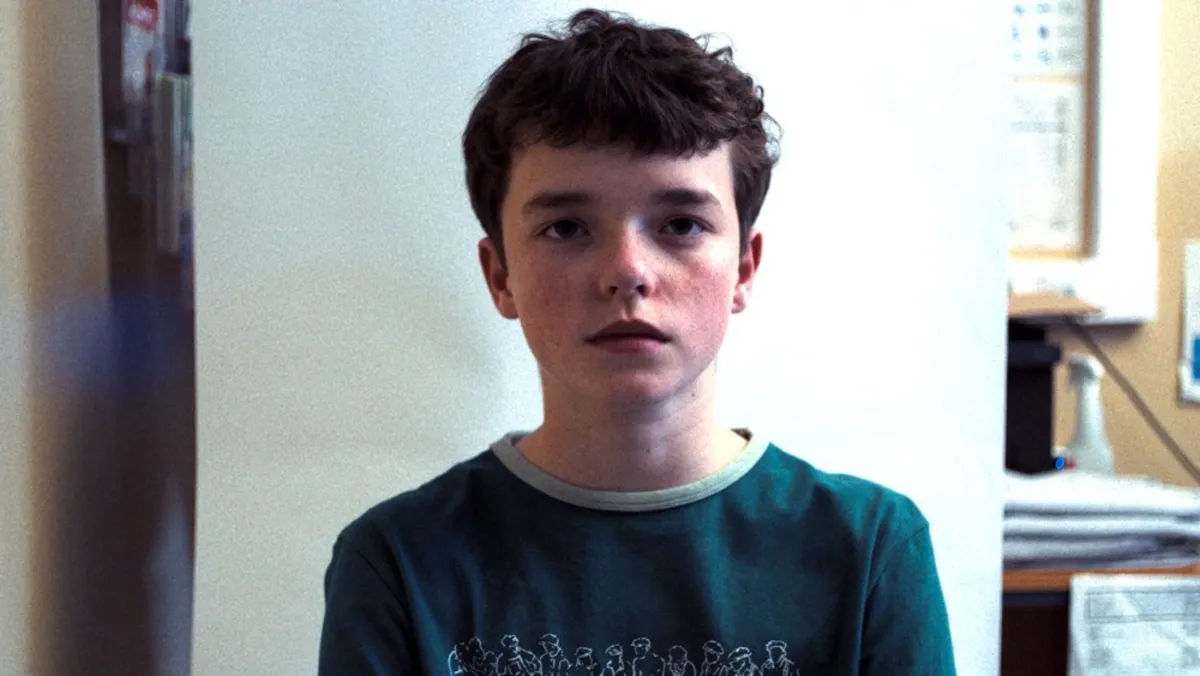
SPOILER ALERT: This article contains spoilers for the gripping limited series “Adolescence,” now streaming on Netflix. This innovative four-part series employs a remarkable filmmaking technique, utilizing one continuous shot for each episode to amplify emotional intensity and narrative immersion.
“Adolescence” centers around 13-year-old schoolboy Jamie Miller, portrayed by newcomer Owen Cooper. The storyline takes a dark turn when Jamie is arrested on suspicion of murdering a classmate. The series unfolds in real-time, beginning with a dramatic police raid early in the morning, leading to intense questioning and ultimately revealing the truth about Jamie's involvement.
The series is brought to life by the collaboration between cinematographer Matthew Lewis and director Philip Barantini. They have masterfully executed a one-shot style throughout the episodes, ensuring there are no invisible edits. Lewis confirmed to Variety, “There’s no stitching of takes together. It was one entire shot, whether I wanted it to be or not.” This approach creates a palpable sense of tension and nervousness as viewers journey through Jamie's story.
Creating a continuous shot narrative requires meticulous preparation. Lewis explains that the first step was ensuring the script aligned with this unique format. Writer Jack Thorne was highly collaborative, adapting the script based on feedback regarding the camera's movements. “Does the script work in its entirety for this format?” Lewis recalls asking. The goal was to avoid forcing elements that didn’t fit the one-shot structure.
The planning involved extensive location scouting and mapping out the camera's movements. Lewis and Barantini aimed to create a seamless transition from a real house to a faux police station, ultimately selecting a studio in South Kirkby, Yorkshire. They decided against handheld shooting to maintain a smooth aesthetic, as handheld footage could induce nausea over lengthy takes. The team tested various equipment, settling on the DJI Ronin 4D for its lightweight and versatile capabilities.
Filming the second episode, set within a school, posed significant challenges. The cast consisted of real students, necessitating precise coordination. The assistant director played a crucial role in managing the children's movements while ensuring that the camera could capture the unfolding drama. The technical team established multiple video receivers around the school to maintain a consistent signal, allowing the director to monitor the action across a large area.
Episode 3 features a tense interrogation scene between Jamie and another character, amplified by the lack of movement. Lewis and his team crafted a specialized rig to allow for fluid camera movement around the table, ensuring the camera’s choreography mirrored the actors’ performances. “One-shots work best when there’s movement, and this was never going to have movement,” Lewis noted about the unique challenges presented by this episode.
Owen Cooper’s inexperience added a layer of authenticity to his portrayal of Jamie. Lewis guided him to focus on his character rather than the camera. Cooper's natural approach, combined with clear communication, facilitated powerful performances throughout the long takes.
Filmmaking is not without its challenges, and Lewis experienced several mishaps during production. One notable incident occurred when a power outage caused the lights to go off mid-take. Lewis recalls a moment where he accidentally walked into a wall, leading to an unintentional cut in a crucial shot. “It was a humbling moment, for sure,” he reflected on these setbacks.
Despite the innovative approach, some viewers speculated about the use of visual effects. Lewis clarified that while there were some VFX elements, particularly when passing through windows, the series was filmed entirely in one shot. “There was no stitching of takes together – it was one entire shot in its entirety,” Lewis emphasized.
“Adolescence” stands out in the landscape of modern television, offering a unique blend of storytelling and filmmaking technique. The series not only captivates audiences with its intense narrative but also showcases the incredible artistry involved in creating a one-shot experience. With its emotional depth and technical prowess, “Adolescence” is a must-watch for fans of innovative cinema.